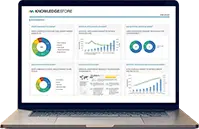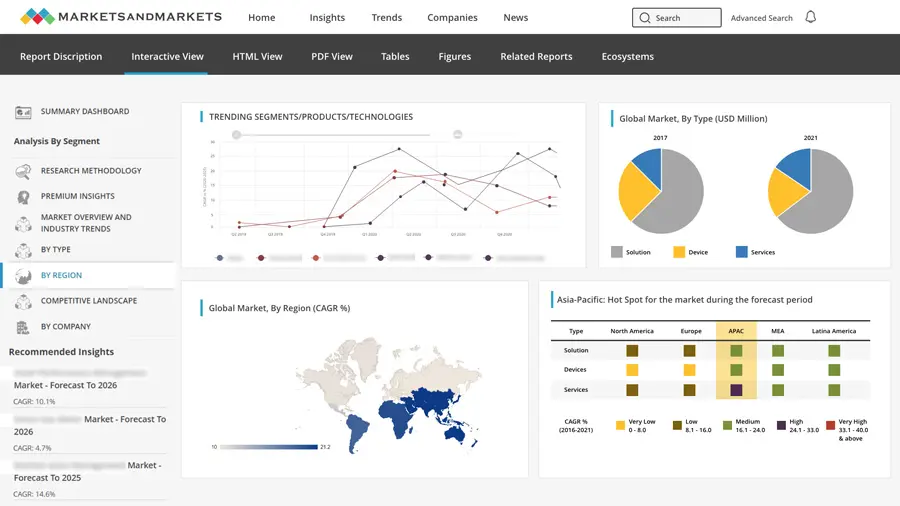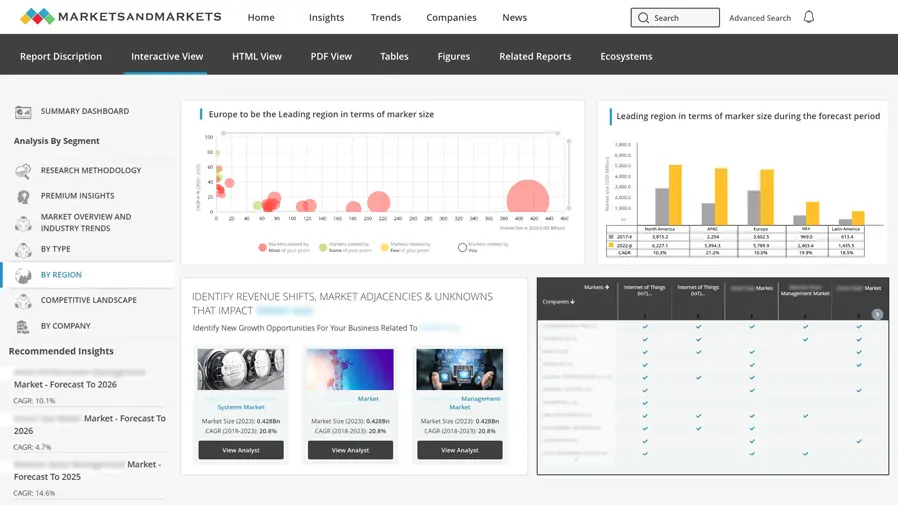Multi-Domain Integration Market by Technology (AI, Quantum Computing, Advanced Sensors, Communication Systems), Offering (Hardware, Software, Services), Application (Cross-Domain Operations, Real-Time Monitoring, Mission Planning), End-Use Industry (Defense, Homeland Security, Commercial), and Region – Global Forecast to 2030
Overview
The Multi-Domain Integration (MDI) / Cross-Domain Warfare Market focuses on integrating operations across domains such as air, land, sea, cyber, and space to enhance military effectiveness. As geopolitical tensions rise and the complexity of modern warfare increases, defense organizations worldwide are shifting toward adopting technologies that enable seamless cross-domain operations.
The market is being driven by rapid advancements in artificial intelligence (AI), machine learning (ML), and advanced communications systems. These technologies are pivotal in creating integrated command-and-control systems that can respond effectively to multi-domain threats in real time.
Key stakeholders in this market include defense contractors, technology providers, governmental bodies, and research institutions. The demand for multi-domain capabilities is particularly prominent among nations looking to bolster their defense posture against near-peer adversaries.
Attractive Opportunities
AI and ML Integration
The incorporation of AI and ML for predictive analysis and autonomous decision-making is set to revolutionize the cross-domain warfare landscape. Opportunities lie in deploying systems that analyze massive amounts of data across domains to provide actionable intelligence swiftly.
Rise in Unmanned Systems
Unmanned aerial, ground, and underwater systems are increasingly being integrated into multi-domain strategies. Investments in technologies that enhance these systems' interoperability present significant growth avenues.
Cybersecurity
As cyberwarfare becomes a key focus area, investments in robust cybersecurity infrastructure for integrated operations are expected to soar.
Space Domain
With space emerging as a critical warfighting domain, there are lucrative opportunities in satellite-based communication systems, early warning systems, and space situational awareness technologies.
Global Market Dynamics
Market Drivers
- Evolving Geopolitical Threats: Nations are facing threats across multiple domains, necessitating integrated defense solutions.
- Technological Advancements: Progress in AI, quantum computing, and advanced sensors is enabling real-time decision-making and enhanced situational awareness.
- Increased Defense Budgets: Many countries are significantly increasing their defense budgets to incorporate next-generation technologies.
Market Restraints
- High Costs: Developing and deploying multi-domain solutions require substantial investments, which can strain the budgets of smaller nations.
- Interoperability Challenges: Ensuring seamless communication and collaboration between systems from different domains is a technical challenge.
Market Opportunities
- Collaborative Defense Initiatives: Countries are forming alliances to develop shared multi-domain capabilities, creating opportunities for joint ventures and technology transfers.
- Commercial Applications: Technologies developed for cross-domain warfare, such as AI and advanced sensors, are finding applications in commercial sectors like logistics and telecommunications.
Market Challenges
- Data Overload: Managing and processing data from multiple domains to derive actionable insights remains a significant hurdle.
- Cybersecurity Risks: Integrated systems are highly susceptible to cyberattacks, which could cripple entire operations.
Global Market Ecosystem Analysis
Industry Structure
The market involves a broad range of players, including defense contractors, technology firms, and academic institutions. Governments play a central role as both funders and end-users.
Supply Chain Analysis
The ecosystem comprises hardware manufacturers (radar, sensors, communication devices), software developers (AI platforms, data analytics tools), and service providers (maintenance, training, and consultation).
Key Stakeholders
- Governments: Major investors and end-users of MDI technologies.
- Technology Providers: Innovators driving advancements in cross-domain capabilities.
- Allied Forces: Collaborative defense initiatives are key to addressing shared threats.
Recent Developments of Market
Key Innovations
- AI-driven situational awareness platforms that provide real-time threat assessments.
- Quantum communication systems for secure and efficient data transfer across domains.
- Multi-domain unmanned vehicle platforms capable of seamless operation in air, land, and sea.
Major Contracts
- Defense organizations in North America and Europe have signed multi-billion-dollar contracts with key players to enhance cross-domain integration capabilities.
Collaborations
- Alliances between NATO countries have fostered innovation in cross-domain warfare technologies.
Key Market Players
- Lockheed Martin Corporation
- BAE Systems
- Northrop Grumman Corporation
- Raytheon Technologies
- Thales Group
- General Dynamics Corporation
- L3Harris Technologies
- SAAB AB
- Leonardo S.p.A.
- Elbit Systems Ltd.
Scope of the Report
This report covers a comprehensive analysis of the Multi-Domain Integration Market, focusing on technological advancements, market dynamics, competitive landscapes, and regional growth. The analysis spans from 2023 to 2030 and includes insights into market drivers, restraints, opportunities, and challenges.
FAQ
-
What is the Multi-Domain Integration Market?
- It refers to the integration of operations across air, land, sea, cyber, and space domains to improve situational awareness and decision-making in warfare.
-
Which technologies are driving the market?
- AI, quantum computing, advanced sensors, and secure communication systems are among the key technologies.
-
What regions dominate the market?
- North America and Europe lead due to high defense budgets and advanced technological capabilities, while the Asia Pacific is an emerging region due to rising geopolitical tensions.
-
Who are the major players in the market?
- Lockheed Martin, Northrop Grumman, Raytheon Technologies, and BAE Systems are some of the leading companies.
-
What are the growth opportunities in the market?
- Opportunities lie in AI-driven analytics, unmanned systems, and secure communication platforms tailored for multi-domain operations.

Table of Contents
Multi-Domain Integration Market
-
Executive Summary
1.1 Overview
1.2 Key Findings
1.3 Market Highlights -
Introduction to Multi-Domain Integration Market
2.1 Definition and Scope
2.2 Methodology and Assumptions
2.3 Stakeholders -
Market Dynamics
3.1 Drivers
3.2 Restraints
3.3 Opportunities
3.4 Challenges -
Attractive Opportunities in Multi-Domain Integration Market
4.1 Key Growth Opportunities
4.2 Market Attractiveness by Region
4.3 Emerging Trends -
Global Market Ecosystem Analysis
5.1 Overview of Ecosystem Components
5.2 Value Chain Analysis
5.3 Role of Key Stakeholders -
Technology Insights
6.1 Artificial Intelligence (AI)
6.2 Quantum Computing
6.3 Advanced Sensors
6.4 Communication Systems -
Market Segmentation by Offering
7.1 Hardware
7.2 Software
7.3 Services -
Market Segmentation by Application
8.1 Cross-Domain Operations
8.2 Real-Time Monitoring
8.3 Mission Planning -
Market Segmentation by End-Use Industry
9.1 Defense
9.2 Homeland Security
9.3 Commercial -
Regional Analysis
10.1 North America
10.1.1 Market Size and Forecast
10.1.2 Key Trends
10.2 Europe
10.2.1 Market Size and Forecast
10.2.2 Key Trends
10.3 Asia-Pacific
10.3.1 Market Size and Forecast
10.3.2 Key Trends
10.4 Middle East & Africa
10.4.1 Market Size and Forecast
10.4.2 Key Trends
10.5 Latin America
10.5.1 Market Size and Forecast
10.5.2 Key Trends -
Competitive Landscape
11.1 Key Players and Market Share Analysis
11.2 Strategic Developments
11.2.1 Mergers and Acquisitions
11.2.2 Product Launches
11.2.3 Partnerships and Collaborations -
Recent Developments in the Market
12.1 Technological Advancements
12.2 Emerging Market Leaders -
Key Market Players
13.1 Company Profiles
13.1.1 Company A
13.1.2 Company B
13.1.3 Company C
13.2 SWOT Analysis of Key Players -
Scope of the Report
14.1 Coverage and Limitations
14.2 Future Research Directions -
Frequently Asked Questions (FAQs)
15.1 What is the projected growth rate of the Multi-Domain Integration Market?
15.2 Which region is expected to dominate the market by 2030?
15.3 What are the major drivers of market growth?
15.4 How does technology contribute to market trends?
15.5 Who are the leading players in the market?















Growth opportunities and latent adjacency in Multi-Domain Integration Market